#james welker
Explore tagged Tumblr posts
Text
I've been going through my collection of old (pre-2016 for the most part) academic papers on BL and thought, hey, why not re-read some of them and sum them up so folks can see whether they want to check them out in full?
Today's offering:
Beautiful, Borrowed, and Bent: “Boys’ Love” as Girls’ Love in Shōjo Manga by James Welker, originally presented at the Third International Convention of Asia Scholars, August 19–22, 2003, Singapore, and published in Signs, Vol. 31, No. 3, New Feminist Theories of Visual Culture (Spring 2006), pp. 841-870, UChicago Press. [Jstor]
Welker starts off with a brief explanation of what the BL genre is, what terminology he uses ("BL" as an umbrella term that includes the earlier names of tanbi, shōnen ai, yaoi, and the long-form 'boys' love'):
“Boys’ love” manga emerged as a subgenre of shōjo manga (girls’ comics) around 1970 just as women artists were taking over the shōjo market.(*) It quickly became among the most popular shōjo manga genres, and its creators became some of the best-loved artists in the industry. (* First published in the monthly Bessatsu shōjo komikku in December 1970, Keiko Takemiya’s “In the Sunroom” (Sanrūmu nite [1970] 1976) was probably the first boys’ love narrative. See Aoyama 1988, 188.) - Welker 2006:841
He goes on to challenge the common perception of BL as a genre "by straight women for straight women":
[T]he genre is widely considered to offer a liberatory sphere within which presumably heteronormative readers can experiment with romance and sexuality through identification with the beautiful boy characters. […] Members of the Japanese lesbian community have, however, pointed to boys’ love and other gender-bending manga as strong influences on them in their formative years […] Clearly boys’ love manga can be viewed through a different lens from that which most critics and scholars have been using, and hence the full potential of boys’ love is largely overlooked: that of liberating readers not just from patriarchy but from gender dualism and heteronormativity. - Welker 2006:842-843
He introduces the texts he will analyse (Takemiya Keiko's Song of Wind and Trees 風と木の詩 kaze to ki no uta, 1976-1984 and Hagio Motō's Heart of Thomas トーマの心臓 tōma no shinzō, 1974), and concludes the essay's intro section as follows:
This reading will employ lesbian critical theory, visual theory, and reader responses to these and similar texts to show how 1970s boys’ love manga is not merely queer on its surface but how it opened up space for some readers to experiment with marginalized gender and sexual practices and played a role in identity formation. - Welker 2006:843
Welker goes into the questions of applicability of theories that weren't originally developed for this specific context – visual theories were largely developed through film analysis; European and North American models of gender and feminist theory, while also having informed academic discourse in Japan, in their origin operate on culturally specific assumptions and need to be applied with care.
He talks about the tradition of androgynous and cross-dressing heroines of early shōjo manga and their connection to the earliest BL manga, the dilemma of the "beautiful boy" characters' gender and sex and how to read these – are they boys? idealised self-images of girls drawn onto boys' bodies? neither male nor female? sexless altogether?, and the way Japanese readers in the 1970s, already culturally familiar with gender performance through kabuki or the all-female Takarazuka Revue and similar troupes, received the gender-bending nature of BL stories. He also comments on the role fan interaction via magazines, and the way readers were learning about queer life in Japan:
By the early to mid-1980s, the magazines’ readers were learning in real terms about the world of Shinjuku ni-chōme, Tokyo’s well-known gay district, described as a world full of “beautiful boys like those in the world of shōjo manga” (Aran 1983, 15), as well as various aspects of lesbian life in Japan (Gekkō 1985). In spite of the connections drawn on the pages of these magazines, the possibility that these narratives might be seen to actually depict homosexuality remains broadly denied. To allow that the narratives might truly be about homosexuality—between these girls-cum-beautiful boys—would be an apparently unthinkable invitation to read the narratives as lesbian. - Welker 2006:857
Welker briefly explores how the example texts of Song of Wind and Trees and Heart of Thomas "serve many of the functions lesbian critics and theorists have outlined as roles of lesbian texts" (Welker 2006:858), then goes on to analyse the flower imagery of roses and lilies that is very prevalent in both titles, the intertextuality of these stories with European and French literature (and how the readers were expected to catch on to this intertextuality). On the transgressive and queering nature of writing and reading BL, he says:
[T]hrough acculturation to gender performance in Takarazuka and kabuki and by such cross-dressing manga icons as Sapphire and Oscar, as well as the deliberate ambiguity of the beautiful boy, the reader is encouraged to see not just a girl but herself within the world of boys’ love and, ultimately, is encouraged to explore homoerotic desire, either as a beautiful boy or as herself, either alone or with others, either as her fantasy or as her reality. […] Regardless of whether boys’ love manga were created merely to offer heterosexual readers a temporary respite from patriarchal restrictions on their desire, some readers found in identifying with the beautiful boy a way through the looking glass to a world outside the patriarchy. And regardless of whether he is read as a boy or a girl, the beautiful boy can be read as a lesbian. […] For readers whose experience of sexuality and gender contravenes heteronormativity, works like Song and Thomas offer narrative safe havens where they can experiment with identity, find affirmation, and develop the strength necessary to find others like themselves and a sense of belonging. - Welker 2006:865-866
I've been out of academia so long that I've lost any sense of what a good proportion of direct quotes to original text is, or whether it's even appropriate to quote as much as I did here. This is emphatically NOT an academic article in and of itself -- I'm posting on bloody tumblr. If anyone wants to add to this, I'll be thrilled.
One of the most commonly voiced criticisms of BL is that it's about, but not (or did not in significant part used to be) by or for gay men. This article does not address this point further—Welker does go into this in his more recent articles, iirc; if you've got beef with this aspect, @ him not me. I do however think it's worth noting that this 17-year-old article already recognises that the genre is queer, and has been since its inception.
#bl academia#bl theory#james welker#bl history#yeeting this into the void now#reading academic papers for fun not profit#my nonsense#watch me find errors or typos the minute I've hit post
111 notes
·
View notes
Text
Belated MLK Day Special: Our Friend Martin AKA Martin Luther King: Time Jesus (Commission for WeirdKev27)

Hello all you happy people and a happy very belated MLK day to you all. What happened was the slot only opened up for this review on the day itself and it took me a while to watch it but frankly any day is good for honoring Martin Luther King. And today we're honoring the good doctor, hero, legend, and man of peace with a look at a bizzare educational film that attempts to do the same. It... it certainly tried.
Our Friend Martin comes to us from 1999 and from 90's animation and home video giant DiC. I don't have much more: the film was shown in classrooms as my friend cory has vauge memories of it and was nominated for the outstanding animated program emmy, but wikipedia didn't have much more. It does have an absolutely STACKED cast: LaVar Burton, Jaleel White, Ed Asner, Angela Basset, Whoopi Goldberg, Samuel L. Jackson, James Earl Jones, Ashly Judd, Susan Sarandon, John Travolta, Adam Wylie and current at the time of this writing Behind the Bastards subject Oprah Winfrey. Most of these are small rolls, a scene a piece, but it's still impressive and heartwarming just how many big names showed up for this.
Our Friend Martin is a lot. It has a child's shirt being ripped off as a running gag in the same film as an entirely accurate look at the Birmingham Riot. It's a film that's geninely educational as I learned some stuff from this specail.. but also uses time travel and has Martin Luther King sacrifice himself to save the future. It's a film that despite being behind I still badly wanted to review as it's something you just kinda have to get out of your system. Something so singularly weird yet exactly what you'd expect of it's time. it's our friend martin and it' under the cut.

Our Friend Martin is the story of Miles, an enthusastic young boy who dearly loves baseball and is a huge Hank Aaron fan but is bad at school. What I like is that there's some nuance to it, as Miles later tells his teacher part of why he focuses on it is he figures there's no real out for black people besides being famous and thus isn't focusing.
He's also 12 so his mom threatens to take away baseball and his teacher admits the principal wants to hold him back if his grade keeps up. Miles knows what most kids, and this grown ass man tend to know about Martin Luther King: he was a good man, did a lot of great things for civil rights. I know a bit more, his orignization of the march on washington.. but the fact I don't know much more than a fictional 12 year old is fucking damming and something that shamed me as I watched this. I mean.. I should know more about a man who helped make the world far better and was taken far too soon than what I barely remember from school. Granted my missouri education whitewashed a lot of stuff about the civil war, so i'm not super surprised we didn't have a big deep dive into martin luther king and all the horrible shit racist assholes did to him.
Miles is played by Robert Ri'chard. As I learned thanks to the magic of wikipedia, the child cast here all went on to do stuff, and Ri'chard went on to be the love intrest in One on One, a sitcom I dearly remember for being great fun when it was on the N, starring Proud Family's Kyla Pratt and having a bitching theme song.
His mom isn't in the movie much but is played by film legend and 911 superstar Angela Basset, one of many big names here for about 5 seconds but doing a terrific job.
Miles has other problems too in this case Kyle, his bully who as is standard for 90's bullies, wants to beat on him because shut up, is mildly dumb, has a weird haircut and gets comically humilated. In most cases this would be tripping in a puddle or having a dog bite him or getting escorted out of a ballet school after chasing Alfalfa and Spanky in there. In this case he chases Miles to the bus every day where he gets on just in time and the crazy old buss driver shuts the door on his shirt and drives off. This does not as you'd guess lead to Kyle being drug along the road to school to think about what he did and possibly be scarred for life, but instead his shirt just gets ripped off.
Now this is already fucking weird. When descirbing this to my good friend Jess, her response was an understandable

But it gets weirder, as Kyle now needs a ride in the car from his chainsmoking dad. His chainsmoking dad is only in one scene smoking it up, berating his son for being a half shirted looser and because they could get John Trevolta for a cameo. Weirdly he does not return later when they come back and the future is a back to the future part 2 style hellhole. Yes we're going full biff tanen for this one.
So on top of this, not only does this bus driver rip shirts off, but he also nearly runs children over. A lot. To the point miles is used to it. His name is Wild Man Willis and he's voiced by Richard Kind though we don't hear him till he shows up in the biff tanen timeline. Now granted all but one white person in the Biff Tanen timeline is a violent racist but the fact Mad Dog nearly runs over a black child every day tells me that maybe he always was and this is just plausable deniablity. Not all that plausable mind you as "I hit a child with a bus because I can't publicly do hate crimes again yet" isn't a defense in 1999, but hey.
So yeah already we have attempted comedy and attempted manslaughter and while it won't get WEIRDER it certeainly comes close.
For now let's meet the rest of the main cast as they prepare for a field trip: First up is Randy, Miles Token White best friend with a questionable southren accent, played by future fast in the furious tokyo drift star Lucas Black, once again in a roll he just was not ready for. Tokyo Drift speaks with a horrible southren accent they shoudl've just abandoned as young mister black cannot keep it up. Randy is a skateboarding cool dude who unforutnately is in most of this movie. I do not blame his voice on BLack whow as a children at the time, but more on the voice directors for not getting a better performance or dropping the southren accent.
Filling out the class is Maria, played by Jessica Cruz of On my Block and Liv and Maddie fame, both shows I haven't watched but I will give credit where it's due for. Maria is poorly written as the brains. She's not stupidly written but she is a know at all type a who constantly downtalks the main cast and whines constantly. It's a case of me appreciating that they made the only latina member of the cast smart.. but then being annoyed that she's that sort of smart that grates. The kind of person who just ahs to waggle their brain in your face.
Teaching these annoying children is Mrs. Dale, a hippie teacher who is wise and kinda there and played by Ashley Judd. That's about it.
Now we've met our cardboard cutouts their taken to visit Dr. Martin Luther King's home, and meet the curator, Mrs. Peck.

Yup Whoopi Goldberg taking a break from the Enterprise and the View to help with time travel. Or maybe this is Guinan as she is hundreds of years old. Point is Whoopi Goldberg is helping children travel through time so we should get back to that. When shown MLK's childhood bedroom miles notices some sparks and decides to visit the roped off room.. and is let in when Whoopi notices he has the touch, winds the magic time watch and off we go.
First stop is Martin Luther King Age 12, whose playing some baseball. We get the usual "We've traveled back in time?!" stuff you expect, not realizing it, realizing this is young version of person, etc. You get it.
It's also one of the more effective segments as young martin is playing with some white kids... whose racist mom shows up, berates them for playing with the "colored" and tells Randy, whose also here, point blank if he keeps hanging out with black people "he'll hang from the same tree as them" I... I don't have a pithy reaction image for that this special went fucking hard and it won't be the last time. For all it's flaws and weirdness.. this specail dosen't sugarcoat racisim. It isn't as blunt as it could be, but it's still blunt enough to make it clear just how bad it was. While most kids films, especailly edutainment like this, woudlnt' shy from the racisim part, the mention of hangings and some of the later stuff is pretty damn blunt, as well as the whole biff tanen future.
Next they join a teen martin on a train, finding out about segregation first hand. Danny Glover is the train conductor. That's.. not the best use of your Danny Glover film. They do make better use of their other stars for this bit: Jaleel White plays teen martin very well and I appricate having a diffrent performer for each time period. I"m already a fan of Jaleel as a voice actor, and i'd say he's my faviorite of the martins, injecting some energy into him. James Earl Jones plays Martin's father Reverened King, who the boys meet as they join MLK for supper and I like emphasising that his father made rounds, visting the sick and those who can't leave the home for prayer and such, imparting WHY MLK was like this: he had a good role model who taught him to look out for people. It's simple, sure, but it works and makes me want to learn more about the good reverened, which is what an educational film should do: teach you but also make you want to learn MORE about the thing. To make you enjoy the subject.
Next up is the Mongomery Bus Boycott, the famous one inspired by the rosa parks incident and something I had heard of because who hasn'.. and this is where the film once again goes hard. After the film's usual repitive round of our heroes trying to get martin to remember them, it happens almost every time and never stops being annoying and it's clear he dosen't from timeline to timeline, Martin gets some horrifying news from his friend Turner, played by Samuel L. Jackson himself who unlike a lot of the cameos in this film, actually gets a decent chunk of time to do stuff. Martin's house has been bombed
I had not heard of this and frankly this should be taught in more classes: The reverend's house is bombed. It woudln't even be the last time as the Birmigham Riots we'll get to next were caused by a bombing in a hotel room Doctor King had stayed at and the bombing of his brother Dexter's house. It's not at all suprising there were attempts on the good doctor's life before the one that sadly succeeded. It dosen't make it any less horrific as his wife , played by Behind the Bastards Subject Oprah Winfrey, Coretta is in deep fear.. and his friend Turner wants blood. It's understandable frustration: all Martin did was the right thing, boycotting the busses for equal rights.. and he was attacked for it. And it's telling his response isn't to join them in the attack (If hammily called by Jackson calling for people to use "guns and bricks") but for peace like Ghandi. IT's overwrought sure but I get the message: we are not them. The sad part is sometimes.. that just dosen't work. I respect dr king, he was a truly wonderful man who fought with peace despite how much he went through, how many hoses were turned on him how much time he spent in jail he persisted. I respet him. I wish peace always worked. I really did and I wish the world he dreamnt of would exist... but even if I don't agree that peace is the only option... I can agree that it should be the main one, and that he's one of the most courageous, kind and brave people i've ever known for fighting for it so damn hard, for fighting for what everyone should've had all along.
So to hammer this in our heroes are transported to the Birmingham Riot of 1963, something I dove into on wikipedia and was.. ugly. The short version is that Civil Rights Protestors were targeted and after bombings on Dr King's brother and an attempt on his life the people took to the streets and riots broke out, not unfairly given .. everything. What the special cuts is that John F Kennedy decided to quell the riots.. after all the violence against black people essentially sending the national guard to beat up black people rightfully upset that racists attempted to murder people just doing the right thing and had already taken several firehoses to the face from Bulll Connor, racist politican bafflingly voiced by Frank Welker here.
It's.. a bizzare experince to be sure. I don't doubt frank as a voice actor, he's one of the best in the buisness. He's scooby fucking doo, nuff said. And he has played villians, most famously president megatron

But it's very werid to hear one of his staple voices coming out of historical monster bull connor. He's a pitch or two from Megatron turning the fire hose on protestors. It's .. a lot.
The rest is fantastically done.. a horrifying panoply of dogs, fire hoses and bottles broken as violence spirals and our heroes are just.. lost in it. Their not hurt because edutainment, but I apricate the effort. It's a truly horrifying scene.
So it's back to the present and while he's genuinely learned some stuff Miles main takeaway is "time travel is rad" and "Martin Luther King is my friend now" so he plans to go back with randy tommorow.
The next day in class we get one of the weaker scenes. After a quick check that yup Kyle lost his shirt again and escaped death once again, our heroes chime in on a discussion of MLK and narrate over a video shown historical facts about King's arrest by bull connor, his being held and how after days of hearing nothing his wife called JFK who while a piece of shit about the riots, let's not mince words, did the right thing here and put pressure to get the good doctor released. IT's interesting stuff but I question both why this wasn't another stop on their time journey. Was it because King woudl've been absent if theyd idn't visit the jail itself? I dunno. It's weird.
Speaking of weird we have the weird way a lot of historical footage is used.. with a lot of color filters over grainy old footage. It looks weird isn't great and is mostly there to paper over where they didn't have the budget to animate something.
During the footage miles and co are spotted by Maria. Suspcious she tails them to the king house.. and brings Kevin because.....

So Miles and skrateboard get let back in while Whoopi Goldberg warns them about alterting witht he fabric of time. With a vauge warning instead of saying "Don't change the past dumbass". She lets Maria and Kevin in because why not send more dumbass children through time, and they end up in the room and end up traveling to the march on washington.
Kevin looses his shirt, again and he and miles prepare to throw hands but are stopped by Dr King. He was played by Levar Burton in the previous flashback and now by King's son Dexter, who does a great job especailly for someone who dosen't voice act regularly. The kids encounter their teacher as a younger woman, a bit I love, and Miles buys kevin a shit to bury the hatchet. The running gag comes full circle.
So we get the I Have a dream Speech.. which is done via archival footage but is still as stirring as ever and is the only time the use of historical stock footage works. The man's audio himself is the only way this really coudl've gone and while i'ms ure his son could've recited the speech well, and by heart, it feels right to use Martin's own words.
The kids are inspired and return and Miles is ready for more adventures.. till he finds out the awful truth... Martin Luther King was assassinated. And here's where I feel the film slips up: while the idea of this last act isn't horrible.. I question why it was necessary. The film's already nearly an hour long, it's more than long enough to fill up a class period or tv schedule. Why did we need Miles to go back in time to save Martin Luther king but destroy the present? It dosen't really add much... we get from the various flashbacks how important martin is, and Miles hearing the I have a dream speech in person feels like a better climax. Or if you have to touch on his assination have him be too late and instead go to the funeral. Or talk to martin shortly before and have MLK comfort him. THere were other methods
but instead miles grabs 12 year old martin.. whcih itself is just.. why? I get it was th efirst he met but woudln't it make more sense to grab him BEFORE he died? As a result time is destroyed and everyone else looses their memory.
So after ominously hinting at it all review, let's talk about the Biff Tanen Timeline. With MLK disappearing at age 12 miles is living in a beaten down apartment, MLK"s childhood home is rubble, and Randy's now Racist Randy, while Miles stupidly goes to his school and gets shooed out by the racist principal played by Ed Asner in a wasted part. Also maria can no longer speak english which... kay.
I'm... very mixed on this. I do like some touches like Randy being racist, showing had things just been slightly diffrent he woudln't be the kind annoying dullard we know but a racist asshole. And I may fucking hate randy but Racist Randy is even worse. Kevin would largely be the same but without his shirt based face turn from the sacred timeline.
My two big issues are
Miles is a fucking dumbass the whole segment and while I get not all fictional kids are going to be Marcy Wu levels of genre savy and spot the tropes, it's too blindingly obvious for him to not get, let alone for Martin alone to figure out.
While the present would be worse, which yes is possible, if MLK never existed, it feels insulting to all the other brave men and women (And probably a few nbs) in the civil rights movement, men and women who I wish I knew more names of and feel like researching more after this entirely due to this section of the film, to insuiate NO PROGRESS would be made without him. I get it, this is a late 90's edutainment specail. It's not going to be subtle. But MLK, while one of the biggest faces of civil rights was not the only one who fought for them. History would not be the same, things would've taken longer to set on the right course. It would not be good.. but I refuse to belivie all those involved would've done nothing. That Malcom X would've done nothing had MLK not existed. That's bullshit. It dosen't mean things wouldn't be much worse, or that Randy might be racist or what have you, but it wouldn't be the same as it was in the 60s. For all the fuckery we have now, I have to belivie humanity's better than that.
So Martin realizes he has to go back and die and become time jesus. Miles begs him not to.. but Martin returns and so does all of time. The actors play it very well and the moment is done shockingly well. As for why he can't just go back in time and save MLK... it's because the creators realized having Whoopi Goldberg explain MLK Has to die because time reasons goes against the message just the time. She also has ripple effect proof memory so she lived through all the horrors of the biff tanen timeline are left glued to her memory.

Miles is left sad though, if happy his friends are back to normal, but takes a good message: that we still do what we can and the work continues. Granted the work in this case.. is painting a mural of mlk while a bunch of acid washed clips of king are filtered in and a very 90s cover of ain't no mountain high enough plays

There are not enough drugs in the world to explain this ending, and i'm not on enough of those drugs to explain this ending. So with that inspiring acid trip done, our heroes stare at their handiwork as the movie ends.
Our Friend Martin means well. It does teach a lot about Dr King and to it's credit got me intrested in the man's life on a deeper level. Part of it is wanting the full story without the editing down for children, but i'm still intrested in something I shoudl've studied long ago and that counts.
This special's still trapped in the confines of it's time, being incredibly 90s and thus not having the budget something like this really deserved or the time it needed. This specail REALLY needed to be a full movie to get the full impact of things and truly use it's cast, but they barely had the budget for 40 minutes, and would've been better served shaving it slightly. We didn't need the biff tanen timeline or the montage at the end.
Our Friend Martin is a decent special, easy for me to poke fun at, fun too, but I can't deny that unlike a lot of other edutainment specials it does the best it can for it's time to be honest about it's message and about the horrific times MLK lived in and a good reminder of what the "good old days" many a jackass wants to go back to meant for the bulk of Americans. I can mock Martin Luther King being made into time jesus all I want, but I still give credit where it's due. This specail may be choppy, on the nose and with one timeline too many.. but it's heart was in the right place. Thanks for reading
#my friend martin#martin luther king jr#mlk#animation#the 90s#1999#levar burton#james earl jones#oprah#whoopi goldberg#angela bassett#samuel l jackson#frank welker
10 notes
·
View notes
Photo
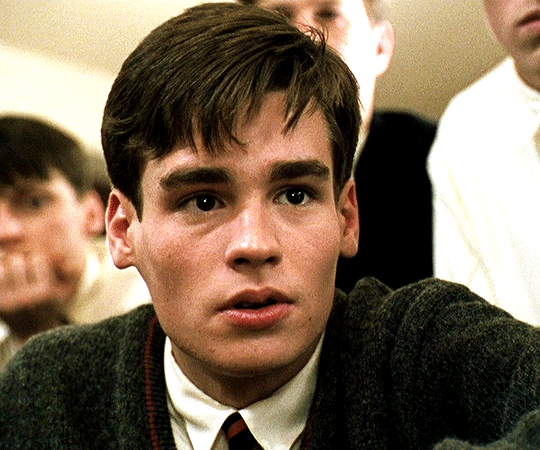
DEAD POETS SOCIETY 1989
Boys, you must strive to find your own voice. Because the longer you wait to begin, the less likely you are to find it at all. Thoreau said, "Most men lead lives of quiet desperation." Don't be resigned to that. Break out!
#dead poets society#1989#robin williams#robert sean leonard#ethan hawke#josh charles#gale hansen#dylan kussman#allelon ruggiero#james waterson#norman lloyd#kurtwood smith#alexandra powers#melora walters#welker white#leon pownall#george martin
20 notes
·
View notes
Text
youtube
We're back back back back back again! And this time with a guest! To celebrate pride, we're discussing BL scholarship with the fantastic Dr. James Welker!
#bl podcast#the yaoi shelf#theyaoishelf#yaoi#yaoi podcast#boy's love#fandom#lgbtq#bl content creators#yaoi content creators#bl scholarship#queer transfigurations#dr. james welker#bl academia#Youtube
9 notes
·
View notes
Text


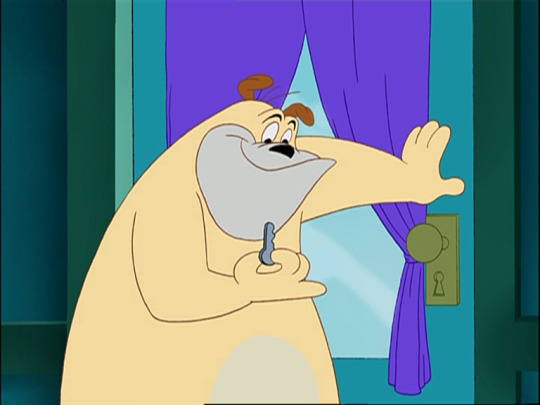

youtube
Tom and Jerry: The Magic Ring (2001)
My rating: 3/10
Some might have considered the fact that, after padding the script using several metric tons of pure unadulterated tedium, they still couldn't quite make this thing an hour long, and come to the conclusion that this was a bad idea. Not so whoever made this movie, though, they persevered in the face of all common sense and reason, and now we get to suffer for their mistake.
#Tom and Jerry: The Magic Ring#James T. Walker#William Hanna#Joseph Barbera#Tim Cahill#Jeff Bennett#Frank Welker#Charlie Schlatter#Youtube
2 notes
·
View notes
Text
Florals by James Welker
I am so fortunate to have great friends, but can you imagine receiving beautiful floral photos each week as my great friend James encounters them on his and Ricky’s travels! Here are some photos as sent to me in 2023 and earlier this year! New Rochelle is great!
View On WordPress
0 notes
Text




✨️WATCHING✨️
#THE ROAD TO EL DORADO (2000)#kenneth branagh#kevin kline#rosie perez#armand assante#edward james olmos#jim cummings#frank welker#tobin bell#elton john#animated#adventure film#comedy#WATCHING
1 note
·
View note
Text


It's here! I'm enjoying myself a lot and thought I'd share some bits and pieces, again, starting with the introduction.
Introduction: Boys Love (BL) Media and Its Asian Transfigurations by James Welker, in: Welker (editor), Queer Transfigurations. Boys Love Media in Asia. Honolulu: University of Hawai'i Press, 2022. p. 1–16. [Jstor]
I took notes by hand while reading, tried to type them up as coherently as possible here.
BL is an umbrella term for all sorts of media (going by volume, the primary mode is still written – prose or manga) that depict male-male romantic and sexual relationships and are primarily marketed to young women. BL has had fans 'around the globe' since the 1980s, especially in East and Southeast Asia, though it really 'dramatically expanded in popularity in the current century'. (p. 1)
Asian BL fandoms do not exist in isolation from the rest of the world (p. 2)
queer as in a) gender/sexuality-related expressions that flout social norms, b) queering norms of (female) sexuality and c) creating breathing room for queer individuals (p. 2)
there's no clear line between BL and LGBTQ media (p. 2)
why 'transfiguration'? -> transit from one culture to another (p. 3)
BL: minor and often underground as a genre, still
4 overlapping attributes of BL and fandoms: 1) transnational + transcultural media phenomenon, 2) useful tool for unsettling gender and sexual norms, 3) cannot be separated from LGBTQ issues including politics, 4) BL is political (p. 4)
note on piracy of BL, its impact on Japanese producers, and how this is rarely discussed (*) (p-5)
1980s/1990s: BL makes it to Taiwan, Korea, China -> category blurring? (p. 5)
shipping as a part of BL fandom (p. 6)
legal issues in Malaysia, Indonesia, Singapore (p. 7)
shipping/fan works were a part of BL culture from the 1970s onwards (cf. Welker 2015) (p. 7)
seme/uke dynamics + shifts? -> mutability of gender (p. 8)
way of alternatives to masc stereotypes for cishet men (fudanshi) (p. 8)
blurring of gay and straight? (p. 8/9)
taboos around BL in Japan arise because it's often sexual and women engage with it (p. 9)
elsewhere in Asia: BL often serves as 'first conscious contact' for middle-class Indian and Indonesian fans with homosexuality -> may prompt reconsideration of own preconceptions/ideas/religious doctrine. (p. 9)
"representational appropriation" of images of gay men (cf. Ishida 2007) (p. 10)
fans turning activist for queer rights in Taiwan (p. 10/11)
rosy image of Japan among gay male fans of BL in mainland China (p. 10)
BL as progressive force for good (p. 10)
impact of US lawmaking on international fan communities (p. 10)
fan wars in South Korea (odeokku vs hujoshi) ca 2016; -> more recently: SK version of yaoi ronsou? (p. 11)
BL queer in that it flouts and facilitates the flouting of sexual and gender norms, has been pushing cishet fans to think about queer rights and the social standing of queer folks, sometimes even pushed fans to activism (p. 12)
grouping chapters under national/regional headings potentially misleading -> borders not so clear in the lives of fans and the texts they engage with (p. 13)
(*) I would LOVE to read more about this personally, anyone got anything? point me!
… this took entirely too long and I REALLY need to work on my handwriting, but I hope this might've been interesting to some. If you read this book (or anything else from the realm of BL scholarship), feel free to hmu, I'm an amateur but I love to talk this sort of stuff!
#acafandom#queer transfigurations#james welker#welker et al#bl history#bl academia#facets of bl#my nonsense#reading academic papers for fun not profit#hellsite (derogatory)#why do I even bother to try and format things nicely#guess at least they didn't kill my alt text for the images#if they had to rearrange them like it's 20-fucking-13
16 notes
·
View notes
Note
Hi! You have so much cool info on your blog, can you share some of your resources on researching and academic reading of shojo??
Wow, I'm really happy you feel that way ;_;
In terms of sources, lets get the boring stuff out of the way first. These books and essays are sorta "shoujo manga history 101," and if you've seen any shitty youtube video about the history of shoujo manga, these sources are gonna sound really familiar. (I'm just gonna copy paste from my bibliography basically)
Boys' Love Manga and Beyond : History, Culture, and Community in Japan (McLelland, Mark J, Kazumi Nagaike, Katsuhiko Suganuma, and James Welker)
A Life-Size Mirror: Women’s Self-Representation in Girls’ Comics.” Review of Japanese Culture and Society 4 (Yukari Fujimoto, and Julianne Dvorak)
Fantasies of Cross-Dressing : Japanese Women Write Male-Male Erotica (Kazumi Nagaike)
“The Formation of Postwar Shōjo Manga, 1950–1969.” In Passionate Friendship: The Aesthetics of Girls’ Culture in Japan (Deborah Shamoon)
“Shojo Manga! Girls’ Comics! A Mirror of Girls’ Dreams.” Mechademia 2 (Masami Toku)
“Beautiful, Borrowed, and Bent: ‘Boys’ Love’ As Girls’ Love in Shôjo Manga.” Signs 31, no. 3 (James Welker)
The articles on this list I have read to completion, but my approach to longer books is to just read the chapters that sound interesting to me. James Welker is really nice, top tier Gilbert penis academic. I owe him my life. All of these are available in English, and if you have the means I highly recommend poking around Jstor if you wanna find more. These are some sources I cherry picked from my senior thesis bibliography, but if you DM me I can give you the whole thing.
The essays written in the backs of English language manga publications of some manga are great too. I really enjoyed reading the essay in the English release of Talk Me Back by Murasaki Yamada. (The essays in the back of Japanese reprints are also pretty cool, but far less accessible)
Another great resource is this other blog https://www.tumblr.com/brickme
She used to have a useful page where you could pick through her tags to get her translations and manga history rambles, but that page is gone and it seems shes on hiatus, so digging that stuff up might take some more poking around. I used to read her posts on slow days at work, hours of entertainment really. Some tags that might help in searching her blog are: #text post and #replies
The more fun sources are the primary ones. Articles written in June magazine and books written by the authors that penned manga classics. Author interviews are great too. But I can't stress enough that the best way to gain insight on shoujo manga is to read a shit ton of it. And not just shoujo manga, manga in general. The best part of academic resources is finding new interesting things to read. In fact, I really should be reading more.
63 notes
·
View notes
Text
fun experience at tfcon
at a tfp panel with David sobolov (shockwave), James Horan (Wheeljack), Sumalee Montano (Arcee), Tanya Gundai(Miko), and Darran Norris(Knockout), I went up to the mic to ask a question. I started with “I have two questions and they are both for David,” and Darran jokingly said “we’ll give you one” and I turned to him, and in the most jokingly passive aggressive/sassy way possible, I said “excuse me?” The crowd went “oooooooooh.” I feel so accomplished. Also I asked David, if shockwave had emotions, what would his laugh sound like, which is a question he’s never heard before, so yet again I feel accomplished. Then when I got something signed by Frank Welker(Megatron), I said “If Transformers Prime Megatron asked starscream to look him in the eye… which one?” Because of the design of tfp megs eyes, and I made him laugh. He called me funny and I’m still so happy. I hope they remember this like I will.
The question: (I’m the shockwave mask) don’t mind the subtitle at the beginning lols

Franks signature:
#transformers#transformers prime#tfp#tfp shockwave#shockwave#david sobolov#darran Norris#frank welker
49 notes
·
View notes
Text
TWC 45: Sports Fandoms [Special Issue]
Editorial
Jason Kido Lopez, Lori Kido Lopez; Beyond the game: New perspectives on sports fandom
Article
Laura Nyhart Broman; Fandom, speculation, and capitalist space-time at the Crypto.com Arena
Júlia Zen Dariva, Natália Brauns Cazelgrandi Ferreira; "What a bust": Character selection and the possibilities of failure in hockey RPF
Seth S. Tannenbaum; The historical marginalization of Black fans at Major League Baseball games
Brendan O'Hallarn; The legend of Taylor Heinicke: An autoethnography of unexpected, passionate fandom
Natalie Le Clue; Controversy, social media, and Formula One: Examining #VoidLap58
Sammy Roth; Institutionally appointed fan-athletes: The hegemonic performativity, commodification, and consumption of scholastic dance teams
Cameron Michels, Deepa Sivarajan; "Pass it to your girlfriend!": A collaborative autoethnography of a friendship through women's sports fandom
Symposium
Dafna Kaufman; Everyone watches women's sports
Tom Z. Bradstreet; The implicated supporter: Complicity and resistance in contemporary football fandom
Alexander Kupfer; Detroit wants Ty Tyson: National and regional fandom and the 1934 NBC World Series radio broadcast
Emry Sottile; Fanception on ice!!!: Cycles of choreographic adaptation and fandom in figure skating
Book review
Tess Tianzi Chen; “Queer transfigurations: Boys love media in Asia,” edited by James Welker
Allison McCracken; "A queer way of feeling: Girl fans and personal archives of early Hollywood," by Diana W. Anselmo
Multimedia
Laís Limonta Gonçalves, Gabriela Lopes Gomes; The commodification of affections among Taylor Swift's and Travis Kelce's fan communities and the Cetaphil Super Bowl 2024 advertisement
Chloe Bond; "Who's afraid of little old me?": A Swiftie theory of monstrous femininity
#twc#otw#fandom#fan studies#academia#fandom studies#academic journals#sports fandom#sports fans#sports#sports culture#NFL#NHL#WNBA#NBA#MLB#F1#dance team#NWSL
8 notes
·
View notes
Text
The Yaoi Shelf- June Schedule

Happy Pride! We're so excited to be back in studio! Here is our schedule for June!
This month we welcome the esteemed Dr. James Welker to the show to discuss BL scholarship!
#bl podcast#the yaoi shelf#theyaoishelf#yaoi#yaoi podcast#boy's love#fandom#lgbtq#yaoi content creators#bl content creators#pride 2023#pride month#bl scholarship#Dr. James Welker
4 notes
·
View notes
Text
My Favourite Reasons For Why the Great War Started
1. Revolutionary Justice in an Unequal Caste-System Society.

I adore the IDW comics, it's the second Transformers media I consumed after the franchised Michael Bay films, and let me tell you – I was not expecting all these heavy explorations into bot psyche, romance, societal injustice, and redemption. Really, it seriously surprised me, I never expected to see actual canonical romance in the Transformers universe, it always struck me as the type of medium to focus on action first.
So – thank you, James Roberts and Alex Milne.
There's so many characters and arcs I could talk about – Cyclonus and Tailgate and Whirl; Chromedome and Rewind; poor poor Shockwave; whatever's going on with Prowl; Starscream, Bumblebee, and Windblade attempting to scrape Cybertron back together; that one time Rodimus and Megatron's charisma was so awe-inspiring, it made personality parasites explode – but I want to focus on how the Great War began in IDW.
It's the first media to suggest Megatron not as a power-hungry tyrant, but formerly as a member of Cybertron's suppressed working class forced to labour due to the alt-mode he was born with. Sick of and unwilling to accept the subjugation imposed upon him and fellow mechs like him, Megatron rises from miner to gladiator who eventually becomes powerful enough to seize power as a revolutionary and then ascends to the image of the all-mighty Lord Megatron that is synonymous with his name.
Optimus, on the other hand, had somewhat humble beginnings as a strict but fair and righteous police captain named Orion Pax struggling to provide justice in a society deeply embedded with corruption.
Although both Megatron and Optimus sought to revolutionise Cybertron into a world where all bots are equal and uninhibited from potential and free will by their alt-modes, they had very different ideologies and motivations on how and why to reach this goal. Megatron, especially, loses his way and path eventually, and continued his slaughter not for the means to an end, but because he began to crave the "pleasure" from the act.

Optimus didn't escape unscathed from tragic ramifications either: the mantle of leadership as the war dragged on for thousands of millennia weighed heavily upon him, so much that his later psyche in the comics could be described as suicidal.
But whatever that infects these two old bots in the future, young Megatron and Optimus were, in some strange way, allies, out of mutual respect and acknowledgement of the other if nothing else.

The war was initiated and continued by them, because they both believed in a better Cybertron, and millions of years later, thousands of atrocities after, unspeakable acts of war crimes, the Great War ended with both of them remembering what they were fighting for in the first place.
IDW's concept that Megatron was a gladiator turned revolutionary and Orion Pax became Optimus Prime who was inspired by Megatron's words made its way to the Transformers: Prime animated series, allowing this universe's rendition of the two titans to be voiced by Peter Cullen and Frank Welker, the legends themselves.
2. Lord Prime and Lord High Protector

Whatever contentions (of the many) that may be had with Michael Bay's re-imagining of this iconic franchise; you've gotta admit: the designs were cool.
Bay gave us Megatron's ram-head helmet, the astonishing CGI transformations, and the adorable Bumblebee design that has since become a classic of the character.
And according to Chris McFeely's video on the Great War, apparently, Bay's Transformers is the first Transformers media to introduce the idea that Megatron and Optimus had personal pre-war relations, some intimate form of brotherhood and camaraderie, while other adaptations at this point only alluded to their connection as rival leaders who rose to power at roughly the same time.
Bay took it a step further; Megatron isn't simply an opportunistic warlord making a grab for power, he was once a legitimate ruler holding an equal throne besides Optimus.

That's right, Bay crafted the title of Lord High Protector, a Cybertronian ruler of high status with authority over military affairs, ruling in tandem with the Lord Prime, Optimus, who was in charge of more civilian and spiritual duties.
It's interesting, this idea, because it implies far more depth to Optimus and Megatron's history, they must have been ruling together for quite some time before Megatron fastened his greedy claws on the All Spark.
I, for one, am curious in a series that explores how they ruled Cybertron together and how exactly this fracture came to be.
3. Megatron Dunks on a Dock Worker for the Fun of It

The classics of the classics, the first Transformers show to place the universe on the map: the archetypal G1 cartoon series that featured wacky shenanigans such as battling dinosaurs on a remote island or Soundwave and his Cassettes dancing with teenagers at a local gymnasium party.
G1 followed a very traditional hero-vs-villain formula, inspired by the Cold War tension at the time of airing and writing; there was no personal connections or noble aspirations for an equal society – Megatron was simply a campy, formidable scoundrel who yearned for power and Optimus Prime was the honourable, paternal everyday hero who rose to be the leader of the force resisting him and his army (at this point, Prime wasn't even a title, it was just Optimus' last name!).
Optimus Prime still had a previous form of Orion Pax, a dock worker rather than a police officer or an archivist, and Megatron was once an admired figure of Orion's, whose parasocial adoration was disintegrated when Megatron blew up Orion's workplace, critically injuring him and girlfriend, Ariel (soon to be Elita-1), and de-activating best friend, Dion. From the ashes of destruction, reconstructed by Alpha Trion, Orion became the battle-masked, audial-finned, red and blue paragon of justice that shouldered the burden of command in the war against Megatron and his evil Deceptions.
230 notes
·
View notes
Text
Green Lantern Corps fancast
My Green Lantern Corps fancast
Notice. Because of the 30 picture limit, will not be able to do them all, but will at the very least try to include most of the Green Lanterns and the main villains
My other DC fancasts
DCEU recast
Batman 66
Burtonverse Recast
Nolanverse
1940′s Batman
90′s Justice League
2000′s/2010′s Justice League
Reevesverse Batman
Gunnverse Batman
Superman
Wonder Woman
The Flash
Aquaman
Justice League
Green Arrow
Teen Titans
Suicide Squad
Justice League Dark
Batman Beyond
The Dark Knight Returns
Telltale’s Batman
Injustice
Legion Of Doom
Birds Of Prey
Green Lantern Corps
Cary Elwes as Green Lantern/Alan Scott
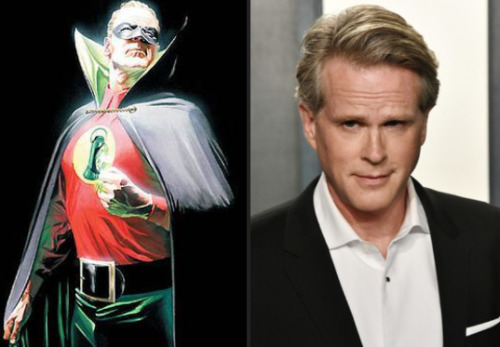
Kyle Chandler as Green Lantern/Hal Jordan
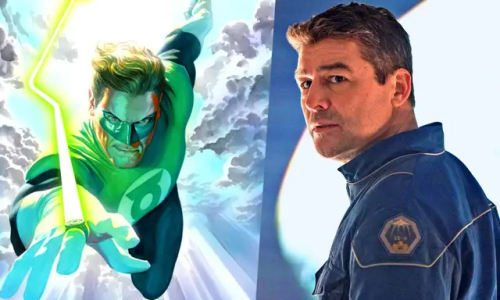
Aaron Pierre as Green Lantern/John Stewart

Nathan Fillion as Green Lantern/Guy Gardner

Michael Cimino as Kyle Rayner

Haaz Sleiman as Simon Baz
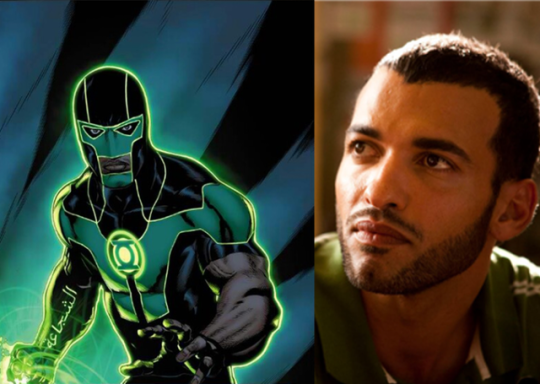
Melissa Barrera as Jessica Cruz

Auliʻi Cravalho as Jade/Jennifer-Lynn Hayden

Michael Rooker as Kilowog
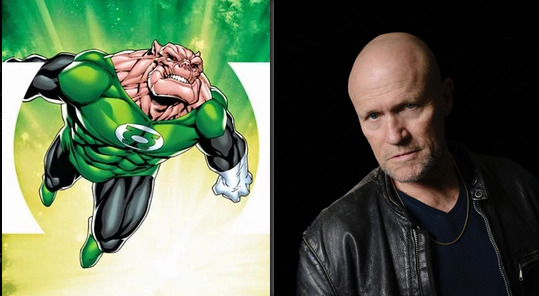
Ayo Edebiri as Green Lantern/Sojourner Mullein
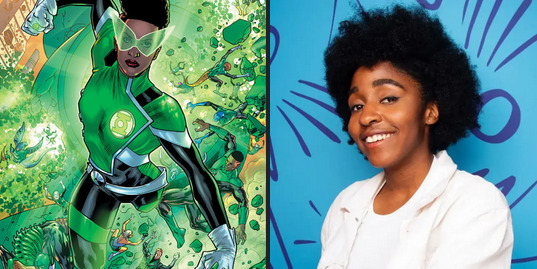
Kyliegh Curran as Teen Lantern/Keli Quintela
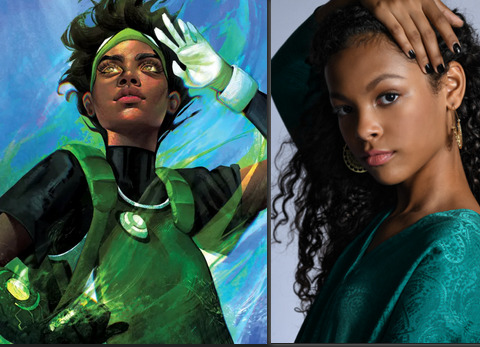
Josh Gad as G'nort
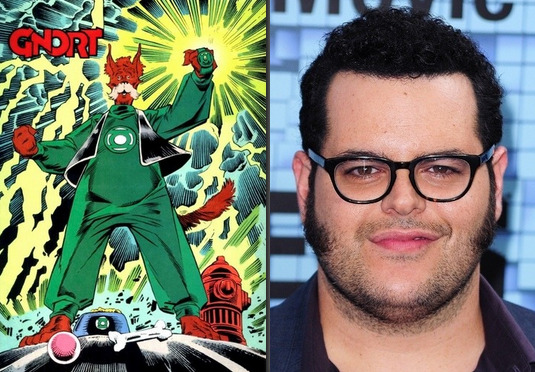
Zoe Saldana as Green Lantern/Laira Omoto
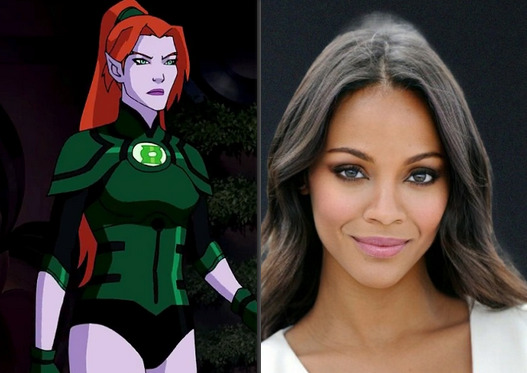
Danny DeVito as Galius Zed
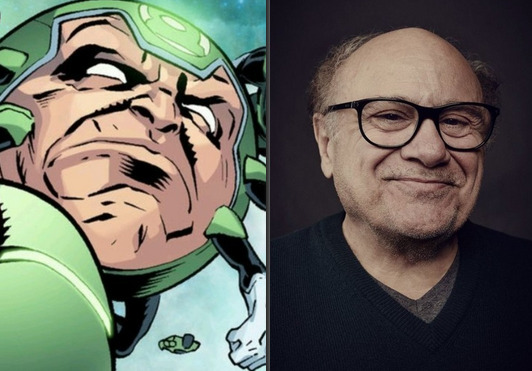
Claudia Doumit as Boodikka
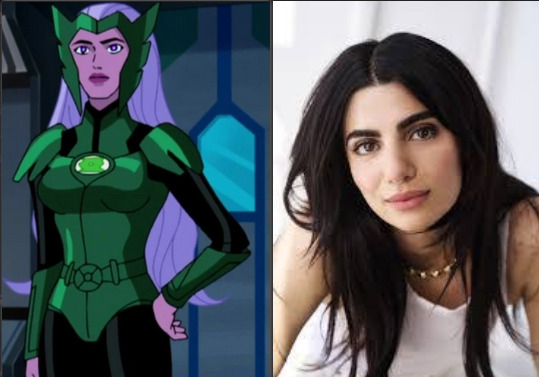
Nathalie Emmanuel as Katma Tui
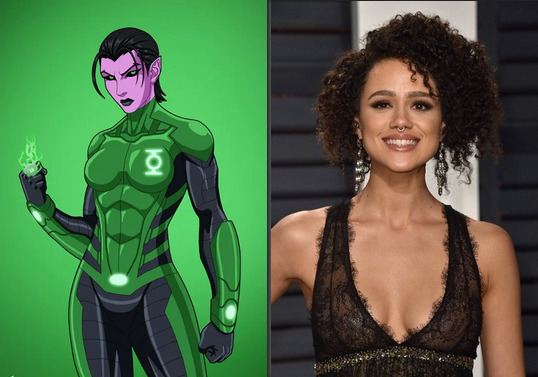
Doug Jones as Salakk
Vin Diesel as Mogo
Riz Ahmed as Tomar-Re

Ken Watanabe as Abin Sur
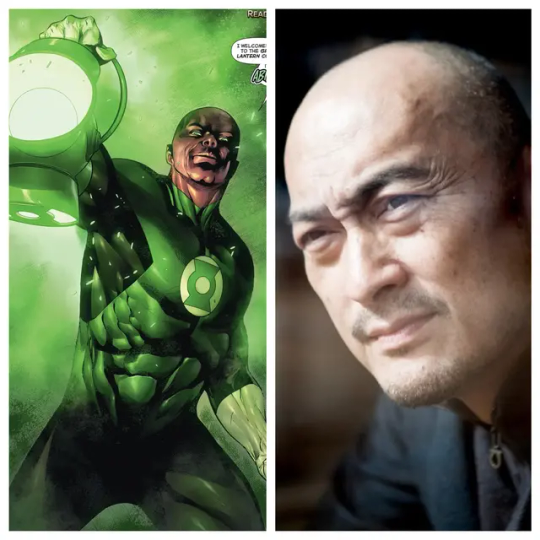
Lulu Wilson as Arisia Rrab
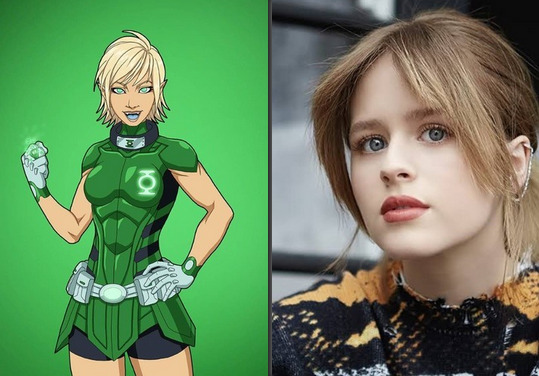
Ian McShane as Appa Ali Apsa
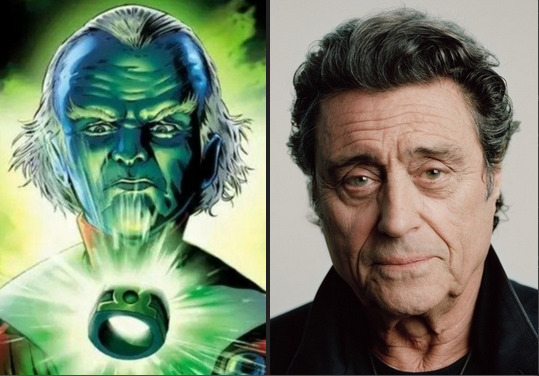
Judi Dench as Sayd
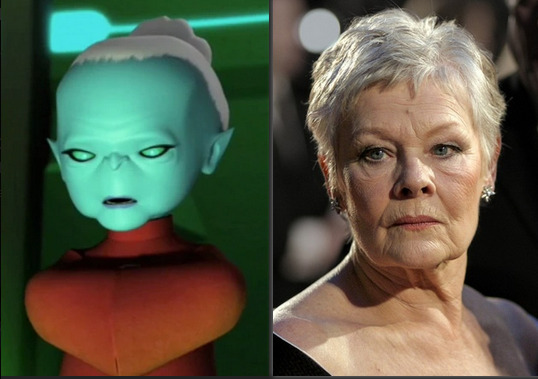
Peter Dinklage as Ganthet
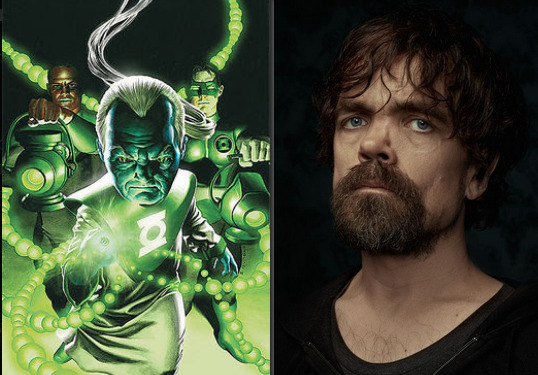
Yellow Lantern Corps
Ulrich Thomsen as Thaal Sinestro
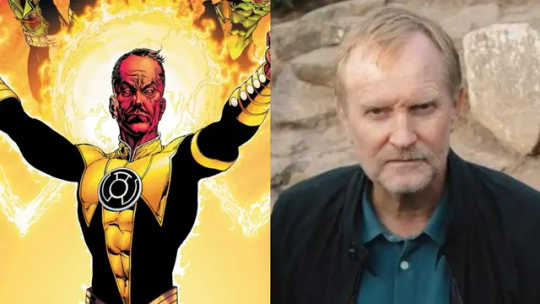
Dee Bradley Baker as Bedovian
Frank Welker as Ranx, the Sentient City
Jeffrey Combs as Despotellis
Dominic Purcell as Arkillo
Jessica Henwick as Soranik Natu
Brian Steele as Devildog
Zach Woods as Romat-Ru
Mark Strong as Amon Sur
Kelly Hu as Karu-Sil
Reed Diamond as Enkafos
John DiMaggio as Slushh
Eva Green as Lyssa Drak
Jennifer Tilly as Kryb
Robert Englund as Parallax
Red Lantern Corps
Rory McCann as Atrocitus
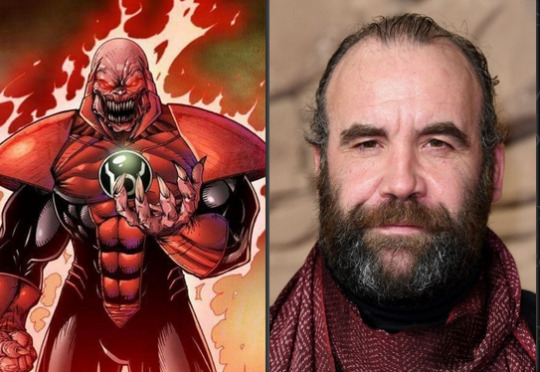
Vladimir Mashkov as Vladimir Sokov
Esme Creed-Miles as Ruby Sokov
Jack Gleeson as John “Jack” Moore (Rankorr)
Sharlto Copley as Vice
Michelle Rodriguez as Bleez
Nolan North as Veon
Mark Pellegrino as Skallox
Lin Shaye as Judge Sheko
Emilymonster (James Gunn's Cat) as Dex-Starr
Star Sapphire Corps
Parker Posey as Star Sapphire/Carol Ferris
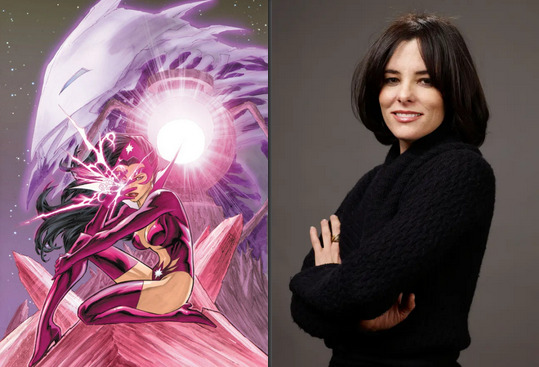
Keke Palmer as Fatality/Yrra Cynril
Tilda Swinton as Queen Aga'po
Betty Gilpin as Jillian Pearlman
Kristen Wiig as Dela Pharon
Laverne Cox as Miss Bloss
Naomi Scott as Miri Riam
Kari Wahlgren as Predator
Blue Lantern Corps
Matt Smith as Saint Walker
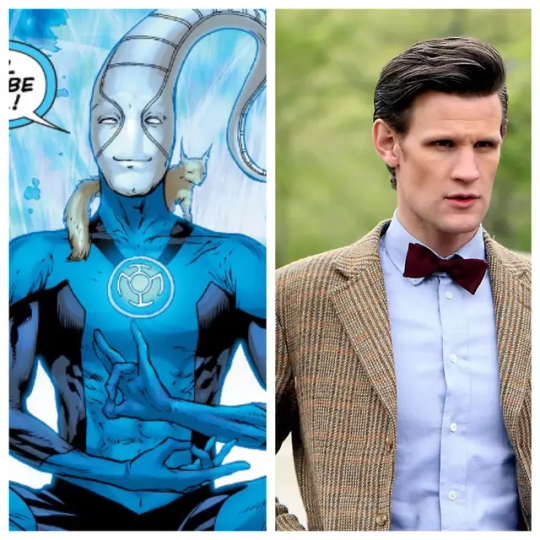
Naveen Andrews as Brother Warth
Ke Huy Quan as Brother Hynn
Tia Carrere as Sister Sercy
Will Yun Lee as Adara
Indigo Tribe
Mandip Gill as Iroque
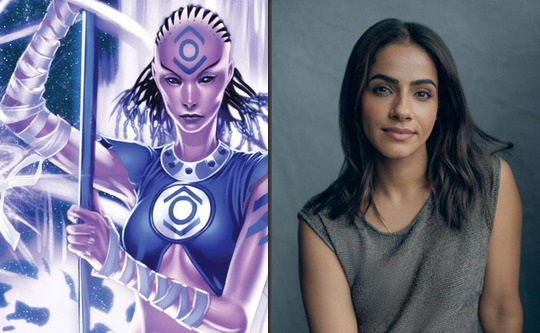
LaMonica Garrett as Munk
Tony Cox as Natromo
Djimon Hounsou as Kreaven
Ed Harris as Slog The Slayer
Orange Lantern Corps
Dan Stevens as Larfleeze

Black Lantern Corps
James McAvoy as Black Hand

Bill Nighy as Nekron
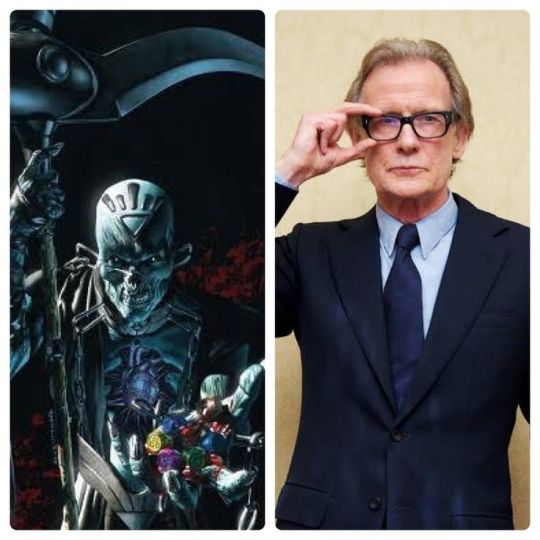
Helena Bonham Carter as Scar
#DC#Fancasts#Green Lantern#Green Lantern Corps#Hal Jordan#John Stewart#Guy Gardner#Kyle Rayner#Simon Baz#Jessica Cruz#Alan Scott#Thaal Sinestro#Carol Ferris#Star Sapphire#Saint Walker#Iroque#Black Hand#Larfleeze#Atrocitus#Jade#Kilowog#Sojourner Mullein#Keli Quintela#G'nort#Laira Omoto#Galius Zed#Boodikka#Katma Tui#Salakk#Mogo
11 notes
·
View notes
Note
Do you have any voice claims for your favorite CC characters? If so, what are they (if you're comfortable)?
I do have some voice claims for some CC characters! Here are some of them!
James Savage: Glenn Howerton
Amy Young: Melissa Fumero
Yann Toussaint: Terry Crews
Hannah Choi: Kym Hoi
Daniel Lambert: Marc Alaimo
Karen Knight: Kate Mulgrew
Jezebel Lopez, Gloria Hayes: Kimberly Brooks
Jack Archer: Andy Samberg
Carmen Martinez: Stephanie Beatriz
Isaac Bontemps, Ray Parker: Andre Braugher
Diego del Lobo: Jon Curry
Thaddeus Mulroney: Frank Welker
Martin Meunier: Corrine Kempa
Catherine Kelly: Shohreh Aghdashloo
Sirius Atwood: Marc Evan Jackson
Uriah Haddonfield: Hugh Laurie
#criminal case#criminal case grimsborough#criminal case pacific bay#criminal case world edition#criminal case save the world#criminal case mysteries of the past#criminal case the conspiracy#criminal case travel in time#my answer
12 notes
·
View notes

